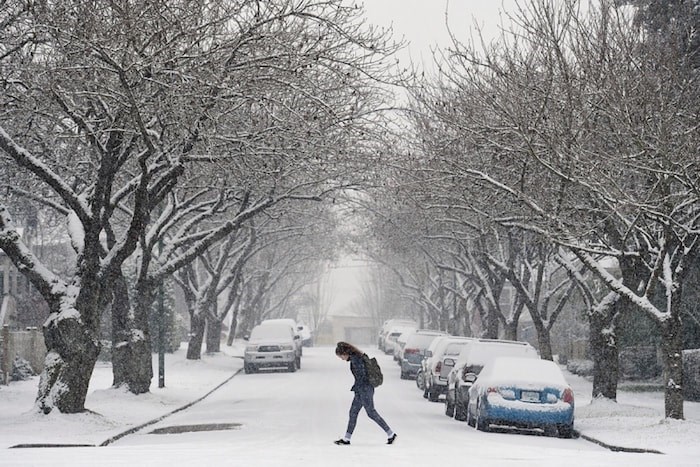 Last year, Vancouver residents faced unexpected amounts of snow. Photo Dan Toulgoet
Last year, Vancouver residents faced unexpected amounts of snow. Photo Dan Toulgoet
The city is putting lessons learned last winter into practice as preparations are made for the coming snowy season.
“Last winter was an exceptional winter,” Jerry Dobrovolny, general manager of engineering said in a press release. “We estimate that it was a once-in-30-year event, but we’ve learned valuable lessons that have allowed us to follow our ethos of continuous improvement to ultimately design higher levels of service for future winter seasons.”
Last winter, thanks to La Niña, Vancouverites endured weeks of unseasonably cold temperatures, snowfall and the resulting icy streets and sidewalks. And the city was widely criticised for its response.
Based on last winter’s experiences, the city has made some changes to its response place, including: expanded coverage locations, increased salt storage and prioritized service response times. The city has also added new vehicles to its fleet that are adaptable for use in all seasons and will be able to access neighbourhoods and lanes more easily to support garbage and green bin collection.
The Vancouver Park Board has also developed a snow response plan.
“The park board is always prepared for bad winters and this year our crews have additional snow and ice fighting equipment,” said Howard Normann, director of parks. “We’re committed to clearing snow and ice in a timely manner with a focus on priority areas such as community centres and destination parks.”
Tips for residents:
- Prepare your snow gear early: Make sure you have shovels, snow boots, snow tires, and salt before the first big snowfall.
- Know your obligations: All property owners and occupants must clear snow and ice from sidewalks around their property by 10 am the morning after a snowfall, seven days a week. Failure to remove snow and ice may result in fines.
- Get winter tires: If you drive through the winter, consider getting tires with the three-peaked mountain and snowflake symbol OR the mud and snow symbol, with at least 3.5 mm tread. The Province of B.C. requires these tires on provincial highways.
- Move your car: City crews plow major roads and bus routes. By moving your car to a side street or garage when snow is predicted or after it snows, City crews can better clear arterials for all users.
- Avoid driving if you can: Check transit schedules at translink.ca for commuting alternatives.


